今天要介紹一個對我而言非常陌生的資料結構 Linked List。它不像 Array 在 javaScript 有內建的方法,所以弄懂它真的花了非常多功夫。若有理解錯誤地方要麻煩高手幫我指證了
不必以連續空間來儲存串列中的元素。由多個節點 (node) 所組成,而每個 node 至少包含資料 (ele) 欄及連結欄位 (next),透過某個 node 的連結欄位可以取得下一個 node
想知道更精確解釋可以看維基百科
Linked List 是一個方便動態增加與刪除的 data structure,也不像 Array 資料是連續的。每個元素(Linked List 裡叫節點 Node ) 都只存在自己的值、跟指向下一個的指標
class LinkedListNode{
constructor(ele){
this.next = null; // 指向下一個
this.ele = ele // 自己
}
}
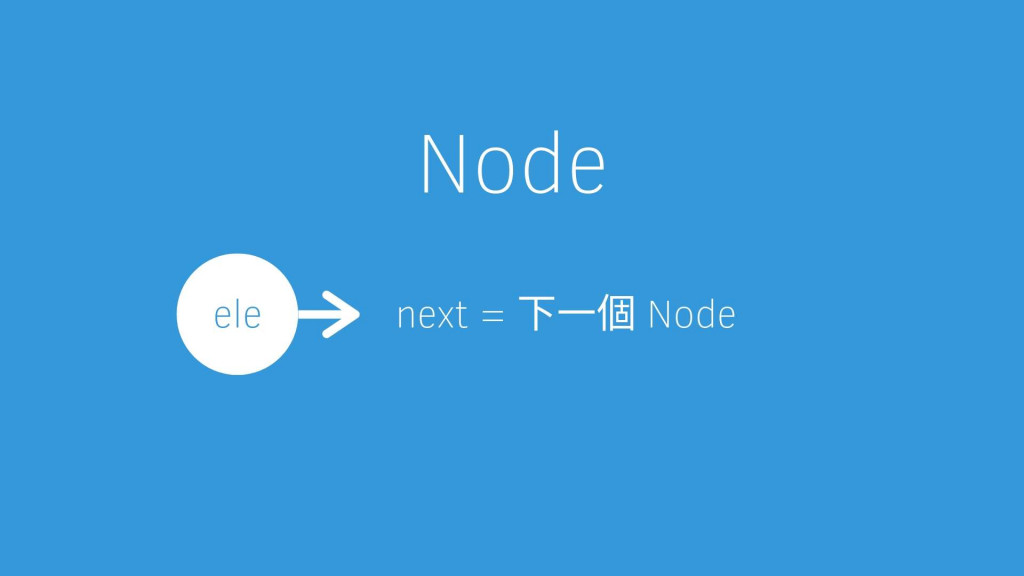
生活中的例子就是火車,Node 就像是火車的車廂。
Linked List 常常拿來跟 Array 做比較。我整理了一個表格如下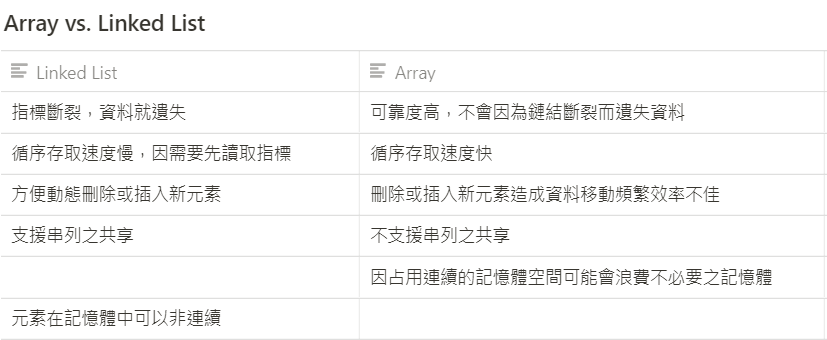
看到這裡應該稍微對 Linked List 有基本認識了,接下來就來介紹它的特性方法
javaScript 並沒有內建 linked list,所以我們只好用物件來來模擬。
首先會建立兩個東西,一個是 Node(火車的個別車廂),一個是 List(火車)
class LinkedListNode{
constructor(ele){
this.next = null;
this.ele = ele
}
}
class LinkedList {
constructor(){
this.head = null
this.length = 0
}
// method here
// ....
}
下列就是我們要建立的方法
append(ele): 從尾部增加一個 node
insert(position, ele): 從特定位置增加一個 node
removeAt(position): 刪除特定位置的 node
remove (ele): 移除某個 node
indexOf(ele): 回傳此 node 是否存在,不存在回傳 -1
toString(): 把 List 物件內容轉換成字串
size(): 回傳總共有幾個 node 在 list 內
從尾部增加元素 (node),尾部新增元素會有兩種可能
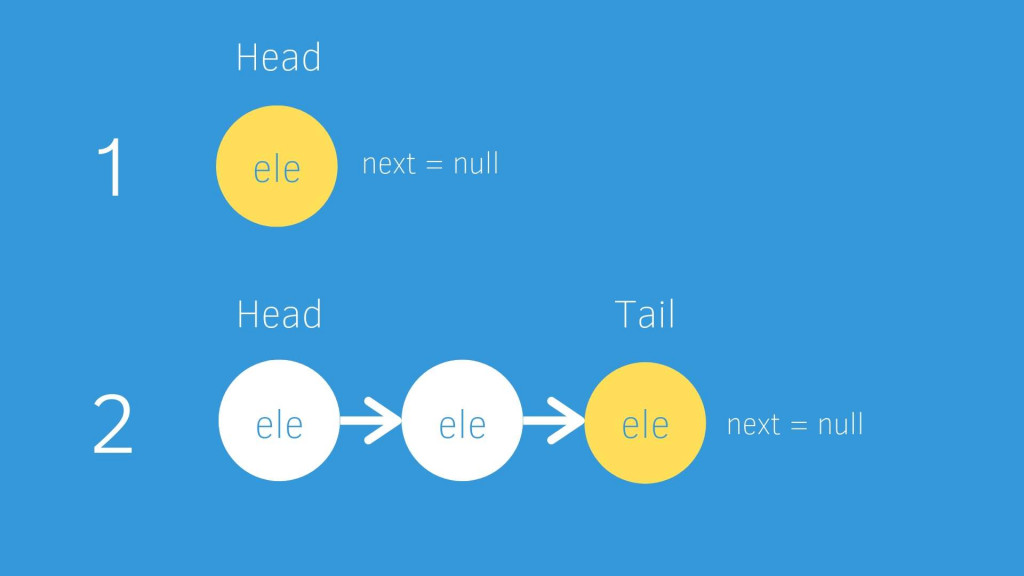
append(ele){
let newNode = new LinkedListNode(ele);
// 判斷 nodelist 是不是空的
if(this.head == null){
// 1. 是空的
this.head = newNode
}else{
// 2. 不是空的
// loop nodelist 到最後一個然後加進去
// 最後一個就是 current.next == null
let current = this.head;
while(current.next != null){
current = current.next
}
current.next = newNode
}
this.length ++;
}
在特定位置(position) 插入 node,也是有兩種可能
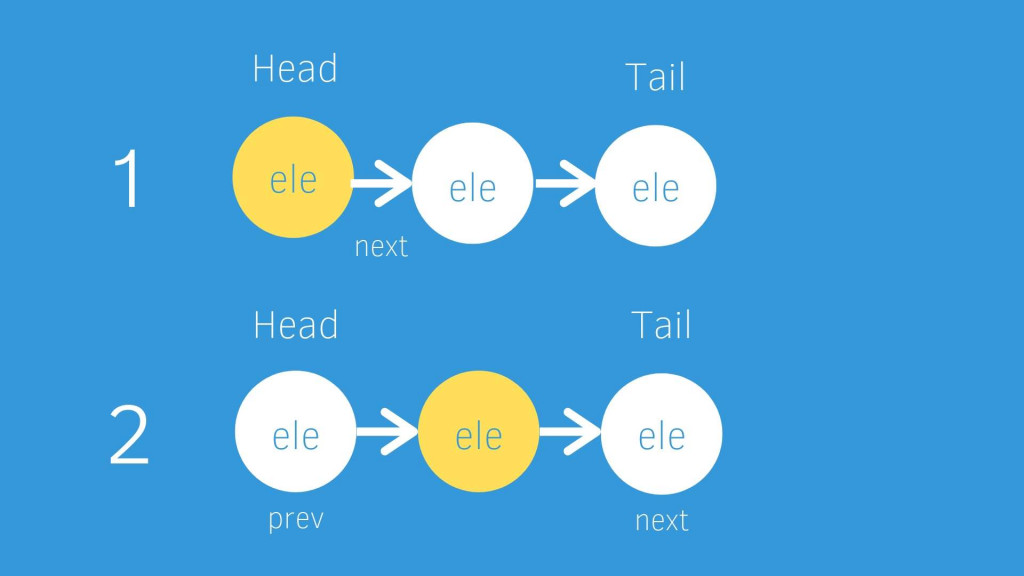
insert (position, ele){
// 判斷極限值
if(position > -1 && position <= this.length){
let newNode = new LinkedListNode(ele)
let current = this.head;
// 1.1 判斷是否為 head
if(position == 0){
newNode.next = current;
this.head = newNode;
}else{
// 1.2 loop current = previous 找到 position = index
let previous;
let index = 0;
while(index != position){
index ++;
previous = current;
current = current.next;
}
newNode.next = current;
previous.next = newNode;
}
this.length ++;
return true;
}else{
return false;
}
}
刪除特定位置 position 的 node,有下列兩種情況
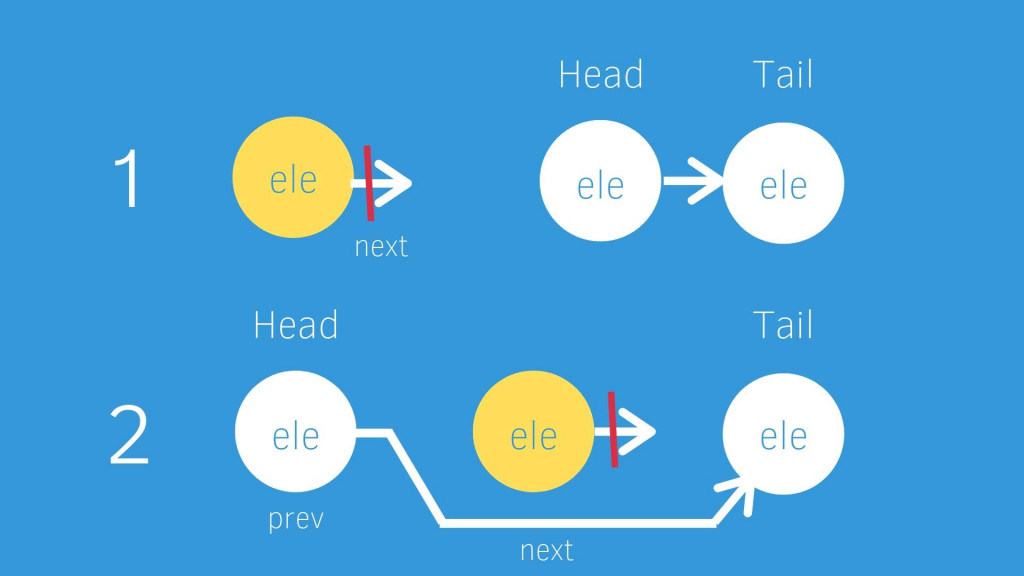
removeAt (position){
// 判斷極限值
if(position > -1 && position < nodelist.length){
// 1. 繼續下去
// 判斷是第一個(head)被刪掉還是其他
let current = this.head
if(position == 0){
// 1.1
this.head = current.next
}else{
// 1.2
let index = 0;
let previous;
// loop 到 position 然後
while(position != index){
index ++;
previous = current;
current = current.next;
}
previos.next = current.next
}
this.length --;
return current.ele;
}else{
// 2. sorry 不能執行這個方法喔
return false
}
}
移除某個 node
remove (ele){
// 結合這上面寫好的方法
let index = this.indexOf(ele)
return this.removeAt(index)
}
回傳 ele 是否為空 空得回傳 -1
indexOf (ele){
// 慢慢找,找到回傳 index
let index = -1;
let current = this.head
while(current){
index ++;
if(current.ele == ele){
return index;
}
current = current.next
}
return -1;
}
toString 會透過 while 迴圈把 LinkedList 物件內容轉換成字串
toString(){
let current = this.head
let string = ''
while(current){
string += current.ele
current = current.next
}
return string
}
回傳長度
size(){
return this.length;
}
node 多了一個 prev,而 list 也多一個 tail。可以避免一般 Linked List 只能從前面循序存。
class LinkedListNode{
constructor(ele){
this.next = null;
this.prev = null;
this.ele = ele
}
}
class LinkedList {
constructor(){
this.head = null
this.tail = null
this.length = 0
}
methodHere(){}
}
Double linked list 方法就不再文章一一列出來了。大家有興趣也可以參考 DS with JS — Linked Lists — II
坦白說我不知道前端哪邊會用到 Linked List XD (假如知道的人可以跟我說)。但特性比起 Array 的確大大減少浪費記憶體的狀況。模擬 Linked List 時也順便訓練自己的思考模式,因為它幾乎每種方法都有兩個以上可能,不像前幾天的資料結構這麼單純。
下一篇會來看有關 Linked List 的 LeetCode 啦
如有錯誤或需要改進的地方,拜託跟我說。
我會以最快速度修改,感謝您
歡迎追蹤我的部落格,除了技術文也會分享一些在矽谷工作的甘苦。

Hello, 謝謝你的文章,剛好正在學Linked List,獲益良多。
文章removeAt()這邊應該是寫錯了:this.head = head.next 應該改成 this.head = current.next
if(position == 0){
// 1.1
this.head = head.next // 應該是this.head = current.next
已改正,謝謝你